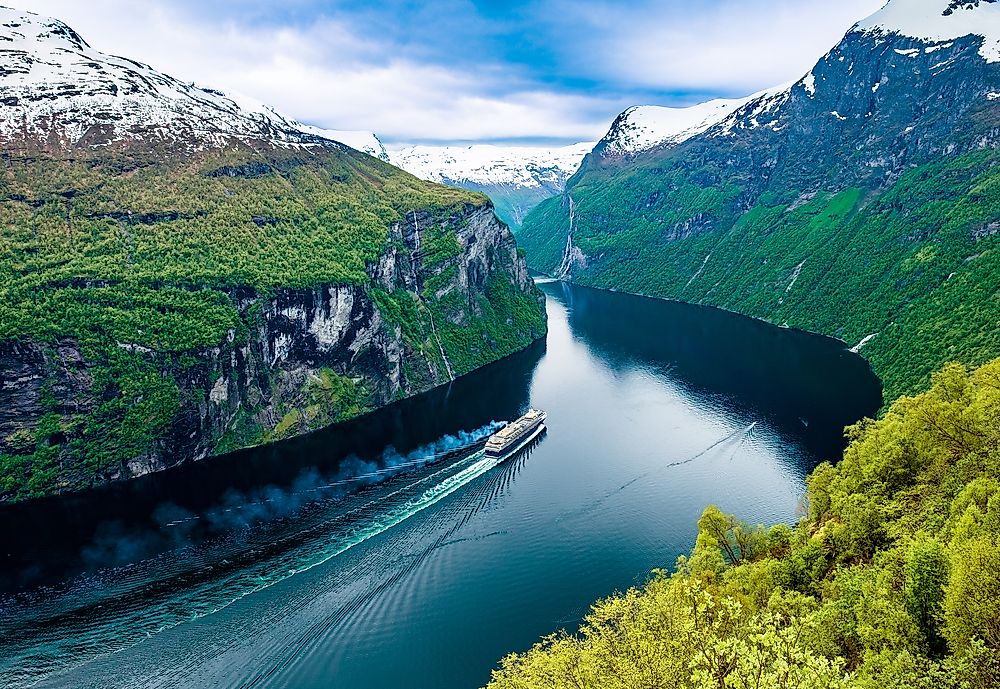The Deepest Fjords in The World

The word "fjord" is Norwegian in origin and can be loosely translated to mean "to travel across" or "to ferry." In geography, a fjord refers a long, deep, narrow arm, or inlet of the sea or a lake drain which extends inland in the form of a deep valley, often with cliffs. Large glaciers formed tongues which extend into portions of the land and create valleys by shaping the land over time, therefore creating undersea valleys which extend from the open sea into nearby land masses. The Norwegian roots of the word stem from the fact that Norway’s coastline has the highest number of documented fjords. In fact, Norway features approximately 1,200 fjords within a stretch of about 16,400 miles of coastline. The deepest fjords in the wor
The World's Deepest Fjords
Skelton Inlet
Antarctica’s Ross Ice Shelf is home to the world’s deepest fjord, known as the Skelton Inlet, which is 6,342 feet below sea level at its deepest point. It has an entry point that is 10 miles wide between Cape Timberlake and Fishtail Point. The Skelton Inlet gets its name from British Lt. Reginald W. Skelton, the chief engineer of the ship and crew who discovered the fjord during the Discovery Expedition that lasted from 1901 to 1904.
Messier Channel
Chile is home to the world’s second deepest fjord, which is located in the sparsely populated region of Patagonia at the southern section of the Andes Mountains. The Messier Channel has a depth of 4,455 feet is named after French astronomer Charles Messier. Although often listed along with the channels of Chile as its name suggests, it is recognized as a fjord in the Scandinavian sense of the word due to its origin and physical attributes.
Sognefjord or Sognefjorden
Located in the western county of Sogn og Fjordane, Norway, this fjord is also known as the King of the Fjords because of its size. Its deepest point is 4,291 feet, and it is both the deepest and largest fjord in Norway. It originates from the Norwegian Sea, which is part of the North Atlantic Ocean, and stretches 127 miles inland, all the way to Skjolden, which is a small village in the municipality of Luster.
The Baker Channel
The fourth deepest fjord is located within the Aysén/Aisén Region of Chile, which is the most sparsely populated part of the country. The Baker Channel, sometimes called the Calen Inlet, is 4,104 feet below sea level at its deepest point and penetrates the mainland for approximately 75 miles. Rather than having a mouth at the ocean or sea, it lies within an estuary that opens into the south-east corner of the Gulf of Penas at Tarn Bay and discharges into the Martinez Inlet. Like the Messier Channel, it is considered a fjord although its name suggests it is a channel.
Fjords in Different Languages
Use of the word fjord has caused some confusion in certain parts of the world. Differences in the Scandinavian and English languages have caused disagreements among geologists and scientists in terms of which bodies of water should be considered fjords as opposed to channels, inlets, lagoons, and bays. The same confusion applies to other languages, such as Danish, which defines any inlet as a fjord. To confirm the exact definition of any inlet, it is best to consult a few different sources and compare their physical features and the remarks of qualified geologists and scientists.











